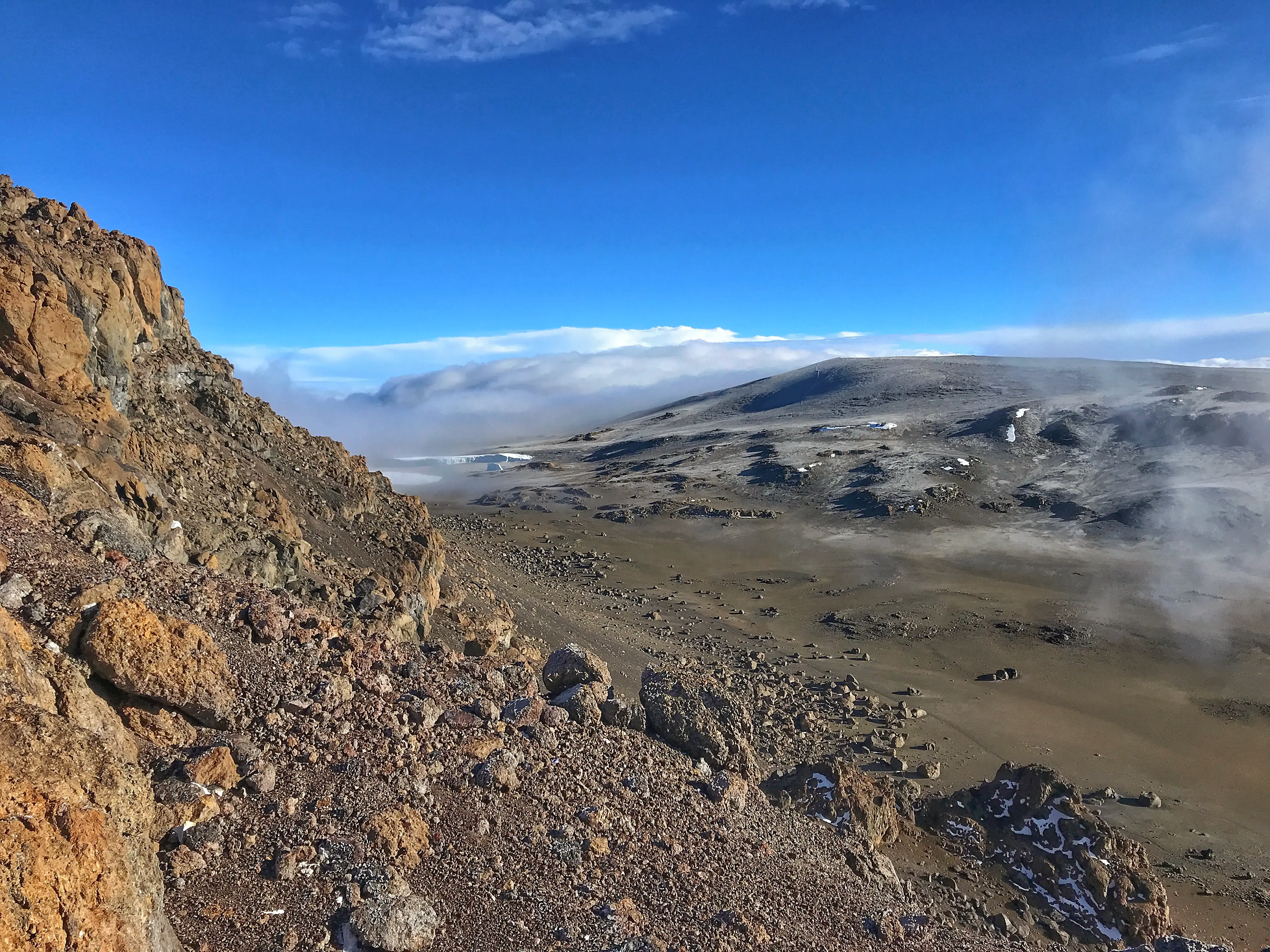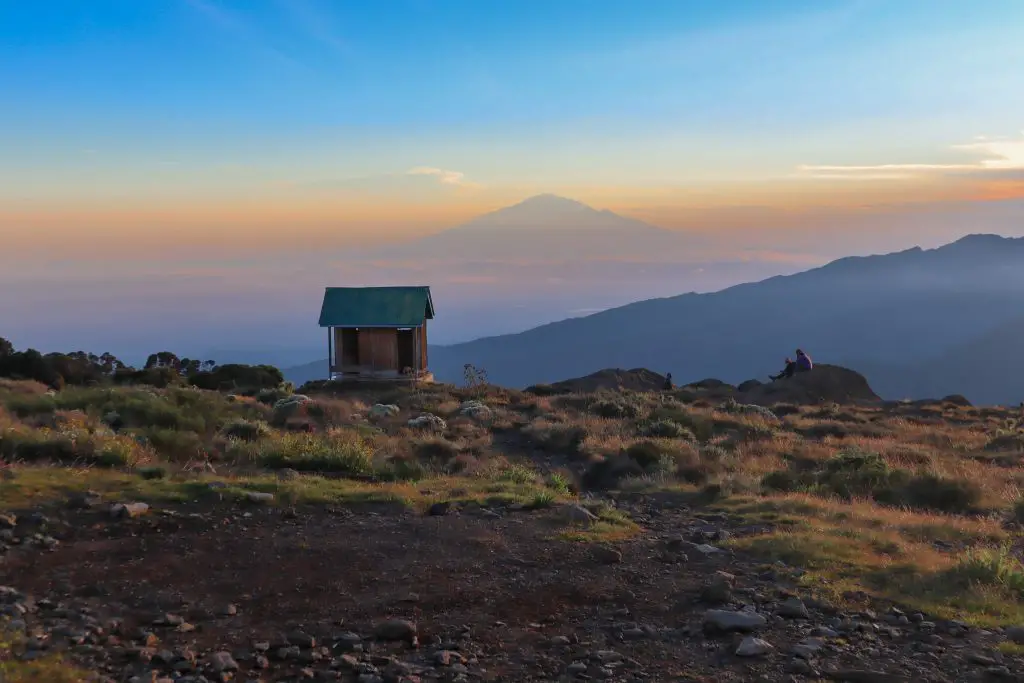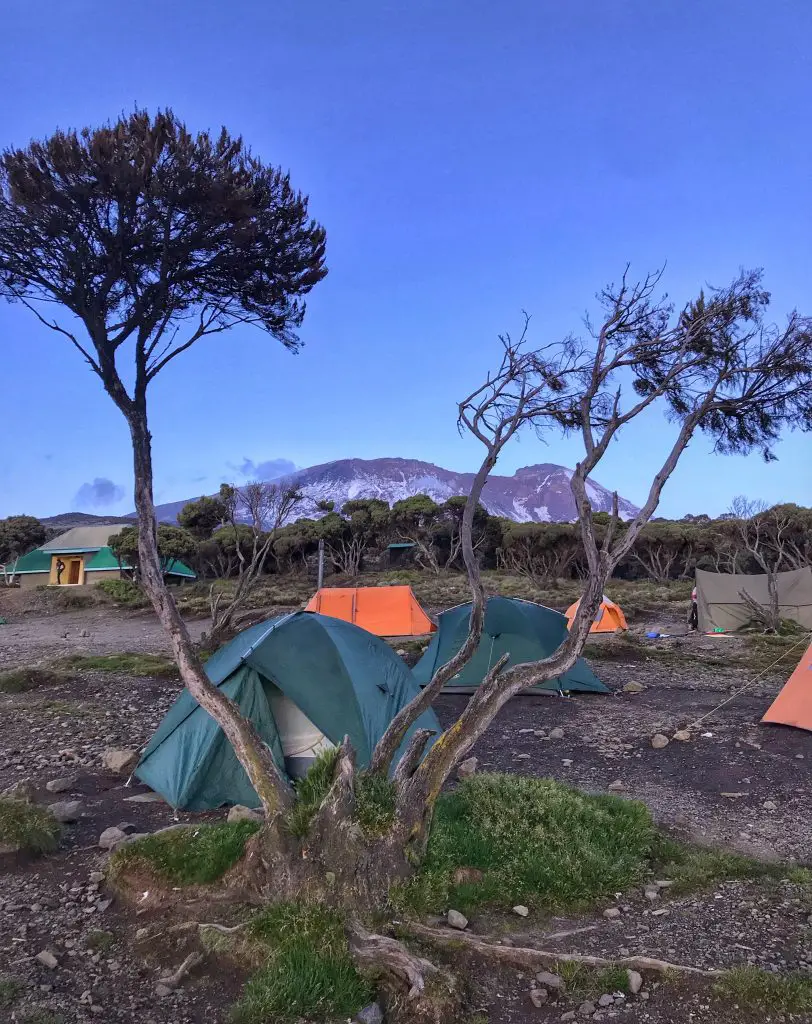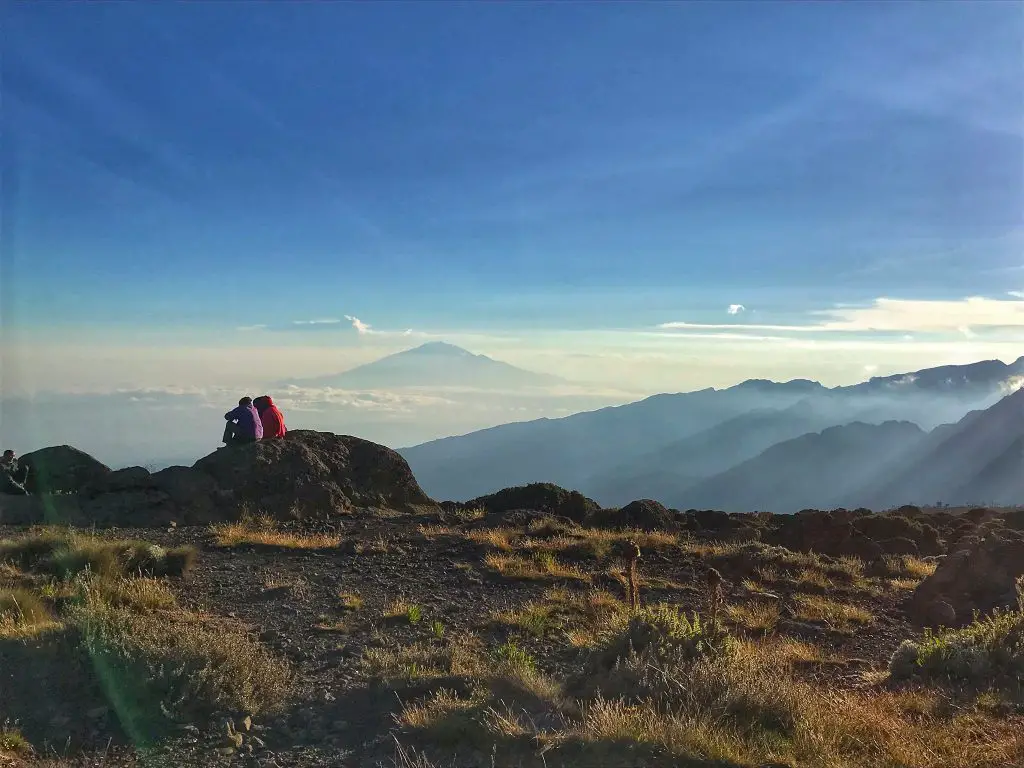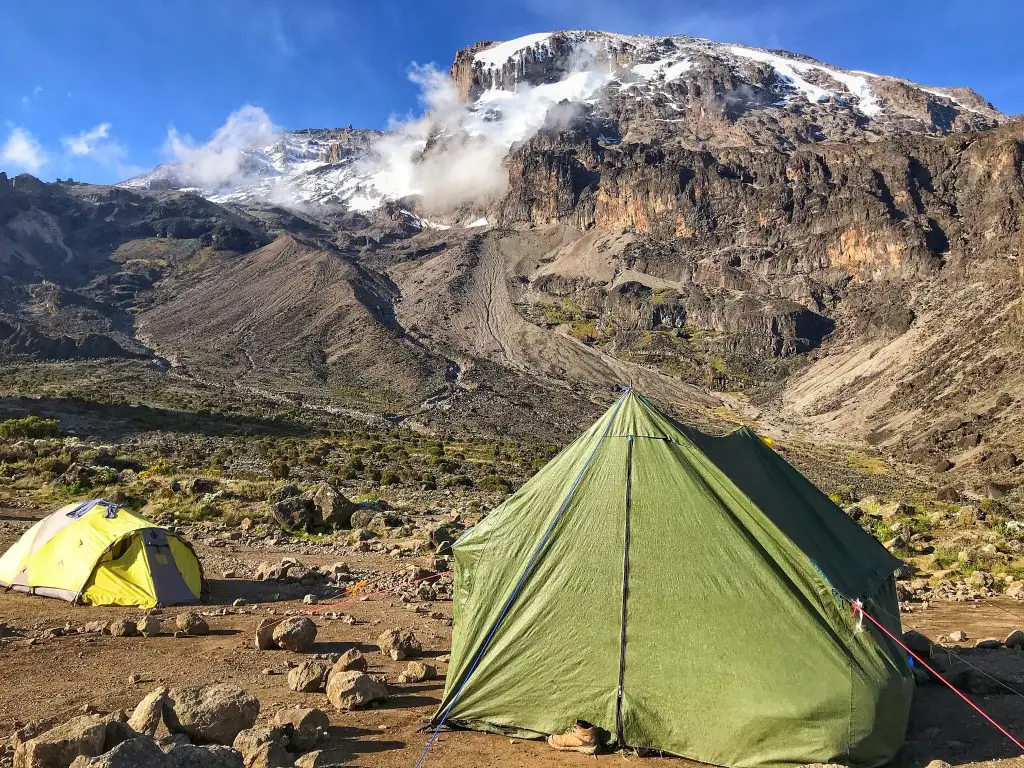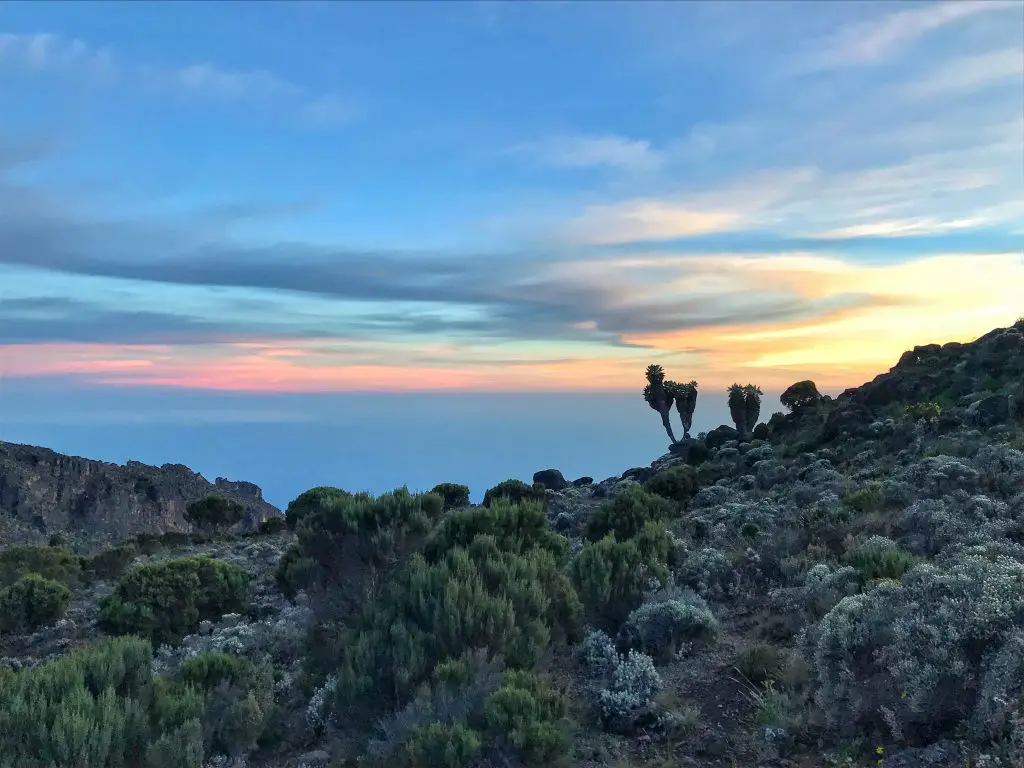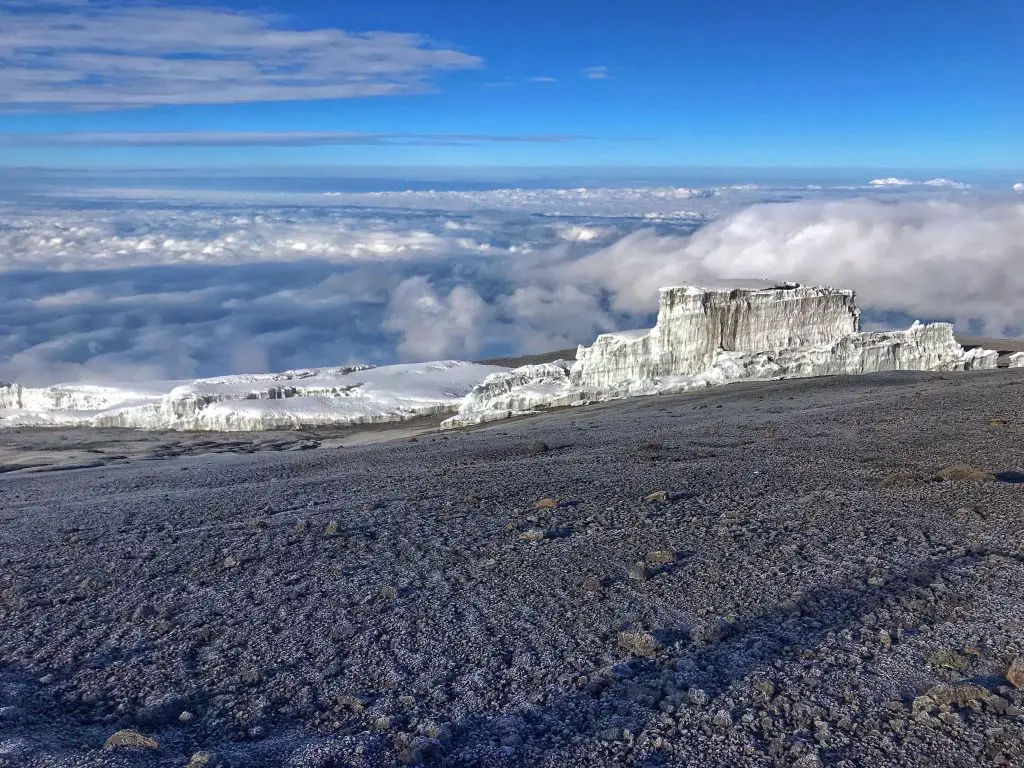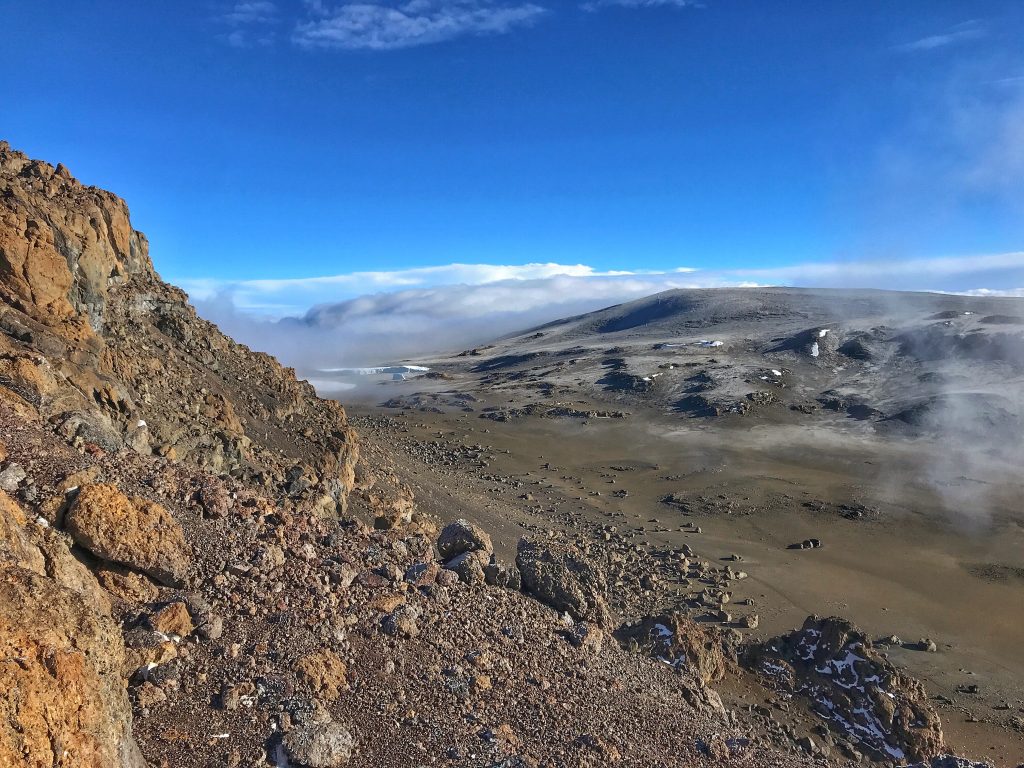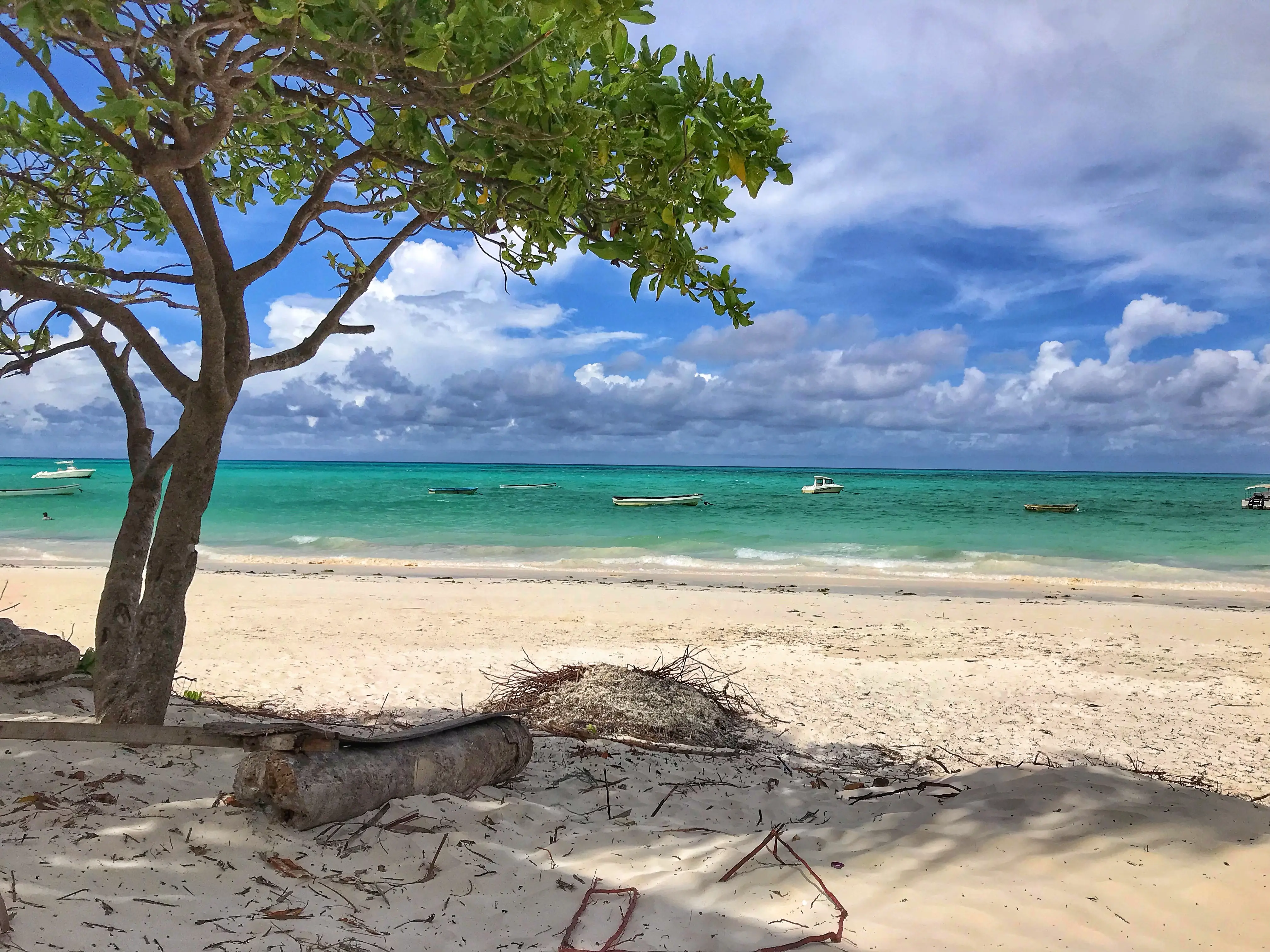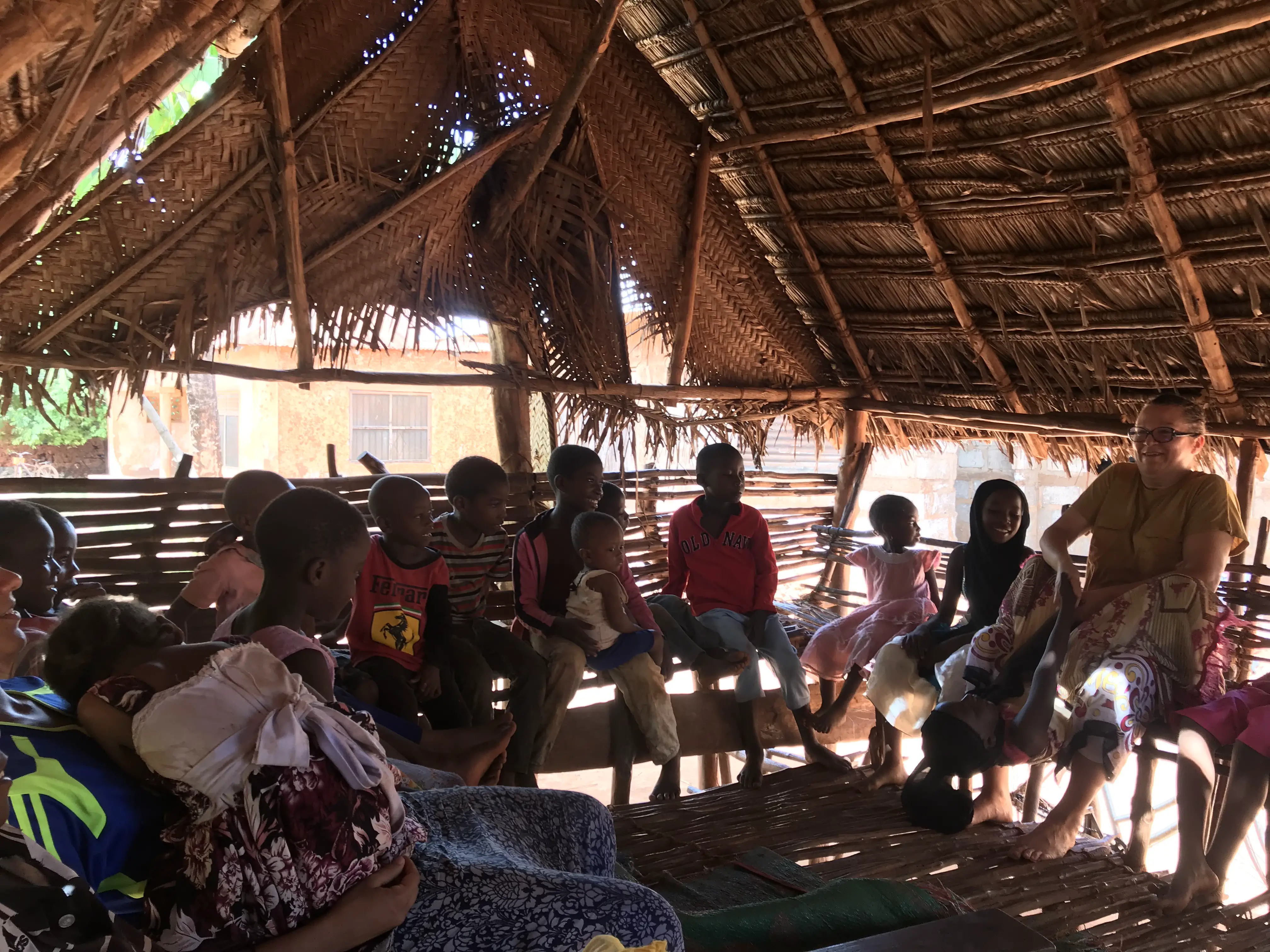
Climbing Kilimanjaro via Machame Route
Kilimanjaro is the roof of Africa, with 5,895 metres, Uhuru Peak is the highest peak in Africa. This summit is located not far from the Tanzania-Kenya border but is officially located on the Tanzanian side.
What is the best time to climb Kilimanjaro?
The ascent of Kilimanjaro can be done at any time of the year.
However, some months are preferable and others are to be « avoided ».
Tanzania, with its equatorial climate, is pleasant all year round.
There are two periods of rain:
- March to June
- October to December
In general, some people will tend to advise you to avoid climbing Kilimanjaro during these two seasons.
However, be aware that this depends on how much time you have. With climate change, you can have a beautiful week during the rainy season or, conversely, a rainy week during the « best periods ».
Personally, I started this experiment during the first week of June. This was not, a priori, the best period. However, we only had one rainy day during this whole trek. The rest of the time, the sun was magnificent and allowed us to enjoy the trek.
Which Kilimanjaro route is best ?
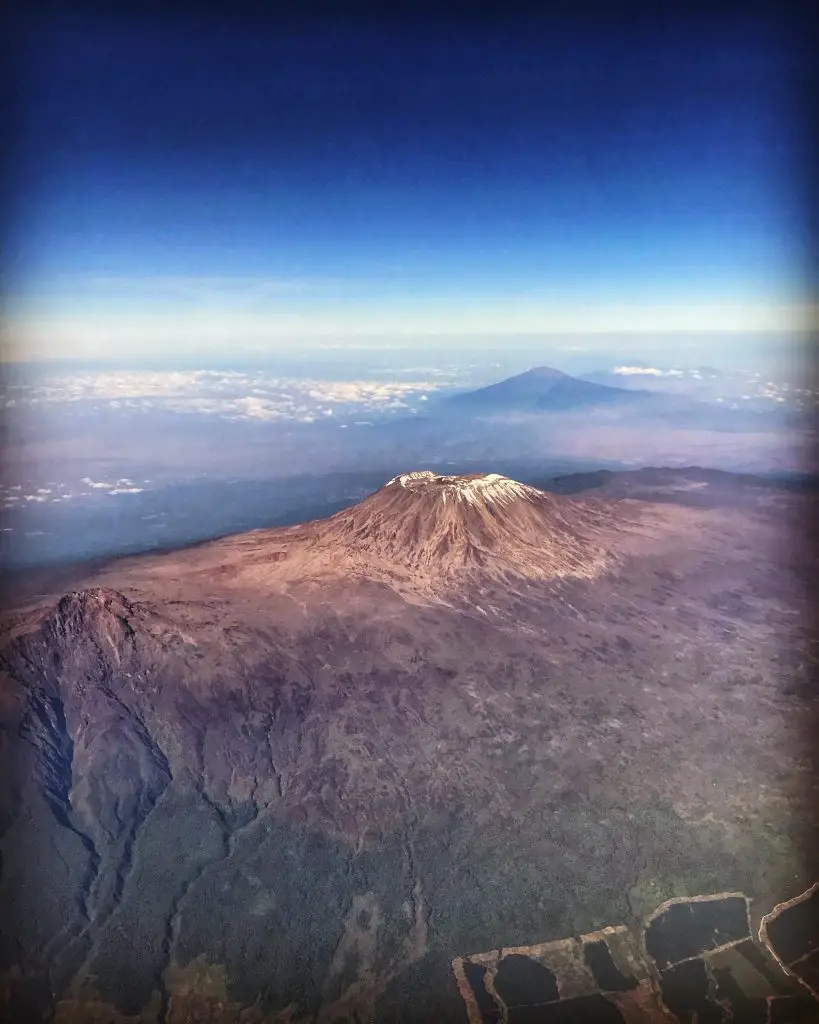
The choice of route is based on your time and physical preparation. The ascent can be done between 4 and 8 days, depending on the route chosen.
The ascent of Kilimanjaro can be done by eight different routes:
- Voie Marangu, also known as the « coca-cola » route, is the best known and the only one equipped with shelters.
- Machame Way, one of the most beautiful ways to climb Kilimanjaro. The ascent can be done in 6 or 7 days.
- Lemosho Way, it is located to the west of the mountain. This route is relatively difficult and rarely used.
- Rongai Way, the only northern route that leaves from Kenya.
- Shira Way, one of the wildest routes.
- Western Breach route, it is the most difficult and spectacular passage to reach the Kibo crater.
- Umbwe track, a relatively demanding track because it is quite fast with a sometimes chaotic track.
- Mweka Way, this way was forbidden to climb a few years ago. Today, it is mandatory to pass through it to get back down from the Machame and Shira routes.
For my part, I chose to climb Kilimanjaro via the Machame route.
Why this choice?! Quite simply because this route is one of the prettiest routes with sufficient acclimatisation to reach the summit.
Kilimanjaro via Machame route in 6 or 7 days?
Once you have chosen to climb Kilimanjaro by the Machame route, you probably wonder if it is better to do the ascent in 6 days or in 7 days?!
The answer depends on you, your physical training and how you cope with altitude.
Also the price varies if you choose 6 days or 7 days. The more days it takes to climb Kilimanjaro, the higher the price will be.
Please note that the price difference between the two shipments is approximately US$200 to US$500 depending on the travel agency and your bargaining power.
The choice of 6 or 7 days for the trek via the Machame route is up to you. Be aware that by choosing the 7-day trek, you increase your chances of reaching the summit because you benefit from an extra day to acclimatize to the altitude.
I personally opted for the 7-day ascent.
For what reasons? Quite simply because I preferred to put all the chances on my side to reach the top. Although I had done a few hikes before attacking the roof of Africa, I was not used to such an altitude. Not knowing my reaction to altitude, although I am still sporty, I preferred to be able to enjoy an extra day of acclimatization.
How is Kilimanjaro via the Machame route going?
Having lived this extraordinary adventure, I thought to share my experience with you day after day. Obviously, for this adventure to be successful, you must be well prepared and have the right equipment for such an ascent.
Day 1 – Machame Gate (1,741m) to Machame Camp (3,000m)
We left around 9:30 am from Arusha and reached Machame Gate around noon.
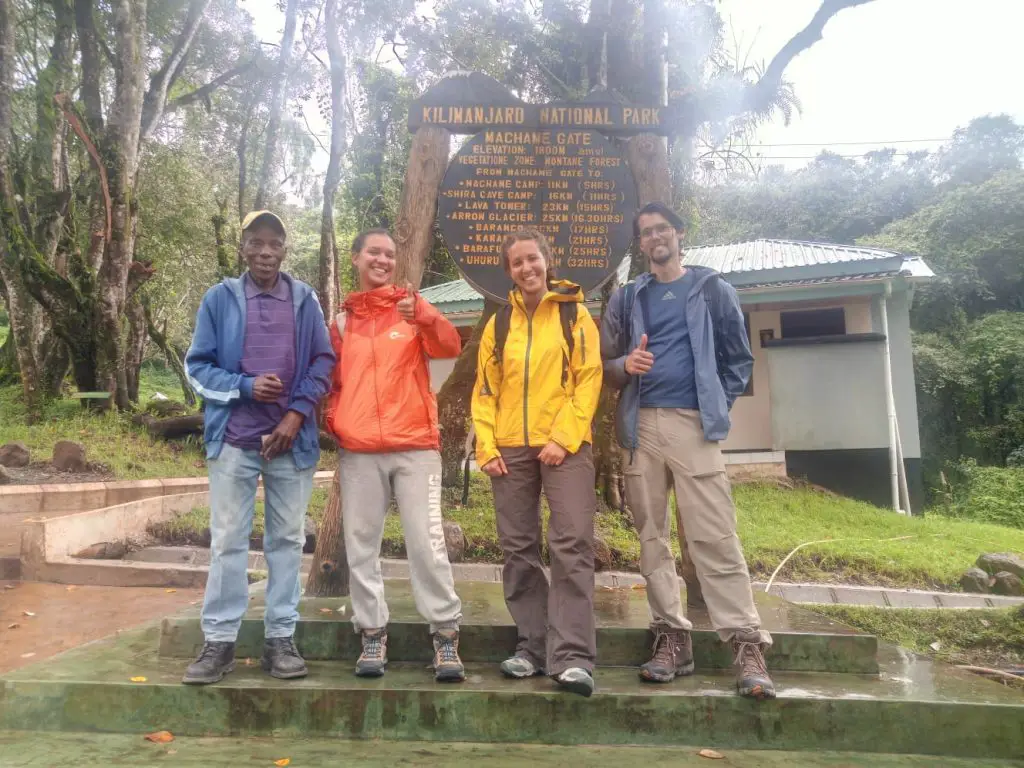
Once you arrive at Machame Gate, you will need to register with Kilimanjaro National Park. There, a lunch box will be distributed to you. Some choose to have lunch before starting the ascent, others prefer to start the walk and then take a break halfway through.
If you decide to have lunch before starting the walk, be careful of the monkeys on the picnic air, they are on the lookout for the slightest food that will escape your attention, so be careful. It is not uncommon for tourists to have their meals stolen by monkeys.
It is at the Machame Gate that the carriers’ bags will be weighed, in fact, each carrier’s bag cannot exceed 20 kg. This is still impressive given that with altitude it is more difficult to walk at a sustained pace with so much weight.
Your first day of trekking begins with Machame Gate. On your first day, you will cross the tropical forest on a well-marked path that is quite steep and especially very wet.
For my part, my trek started in the rain, but I can assure you that it was the one and only rainy day of the week.
While crossing the forest, if you are lucky, you will be able to observe several rare ape species.
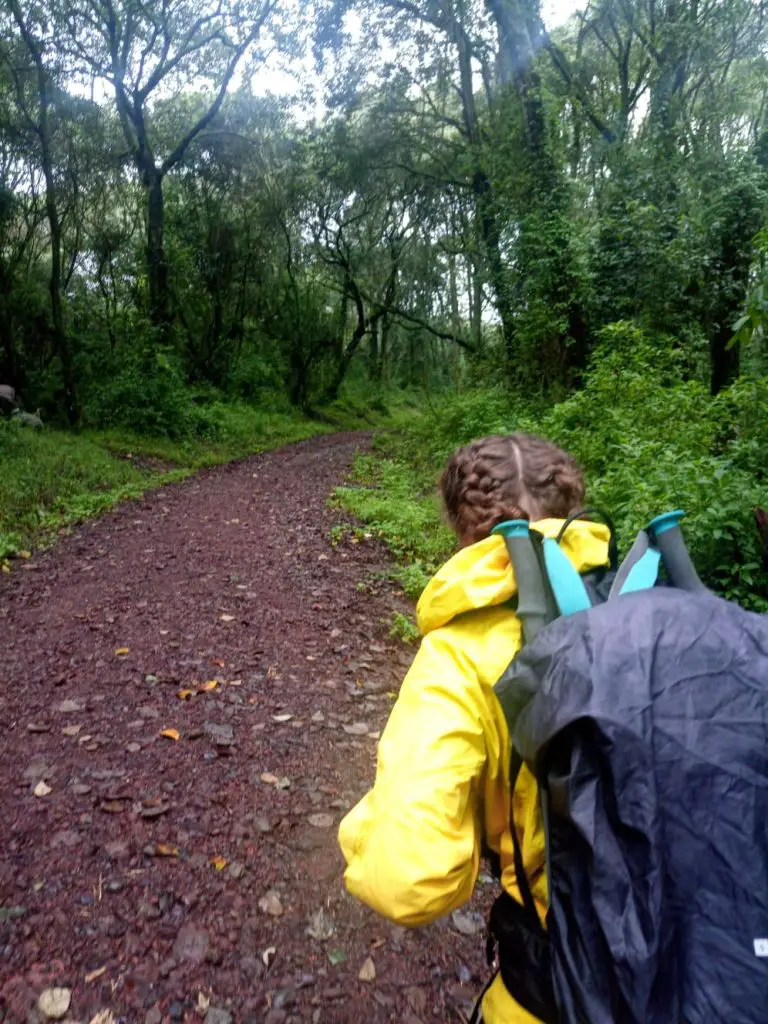
On this first day, you will quickly learn your first Swahili words, namely « pole, pole » which means « gently, gently ». Indeed, every carrier you meet and even your guides will tend to repeat these words to you so as not to use all your energy too quickly.
The guides are important in my opinion, they are there to make you respect a walking rhythm that will allow you to go to the end of your 6 or 7 days of effort.
After 4 hours and 11 km of walking in the forest, we reach our first camp, Machame Camp, located at an altitude of 3030 m.
Once we arrive, the cold is felt at sunset, so we soon cover up so we don’t catch cold.
At all camp sites, once arrived, it is mandatory to register with the camp « manager » for security reasons.
Once you have registered, you will return to your tent that will have been set up by the porters (with your help if you wish to help them). Afterwards, you will receive a small basin of water daily to refresh and wash quickly and then the meal will be served in the tent.
Day 2 – Machame Camp (3,000m) to Shira Camp (3,750m)
After a cold first night, we quickly understand that the rest of the nights ahead will be even colder.
However, the heat of the sun during the day warms us up and makes walking more enjoyable.
We leave around 9am for a 5km walk in 4 hours for our part.
This day of walking begins abruptly with magnificent panoramic views halfway through. The terrain is rather stony with a fairly steep slope.
Throughout the day I was constantly amazed by the carriers who constantly impress me when they passed us.
The second night is spent at Shira Camp. It is a camp located in a beautiful location. With a clear sky you will be able to enjoy a breathtaking view of Mount Meru and by turning you would be able to enjoy a view of Kilimanjaro.
Day 3 – Shira Camp (3,750m) to Barranco Camp (3,900m)
The third day is a big day of adaptation to altitude since it is divided into two parts:
- From Shira Camp (3,750 m) to Lava Tower (4,600 m): start early in the morning to take a 7km walk to reach Lava Tower. The difficulty may be felt by some people who are not used to such an altitude. Your guides will remind you that you must walk slowly to acclimatize to your rhythm. When you reach almost 4,600 m, your steps will be slower because the slightest effort will be felt much more. We made the ascent in 4 hours. Once we arrived at Lava Tower, we took a lunch break. This break at such an altitude allows you to acclimatize quietly. For my part, I felt a little headache at this altitude which quickly passed when we came down again.
- From Lava Tower (4,600 m) to Barranco Camp (3,900 m): after lunch we slowly descend to the next camp 3km away. My headache passed with a small doliprane and after drinking a lot of water. We arrived at the camp two hours later.
Barranco Camp is still a beautiful place where we were able to witness a beautiful sunset at the foot of Kilimanjaro.
Day 4 – Barranco Camp (3,900m) to Karanga Camp (3,995m)
This step starts very abruptly. We start early in the morning with a very steep wall to climb. Indeed, to give you an idea, it is a mixture of walking and climbing.
Again, I am very impressed with the carriers. They carry 20 kg bags and some of them go up in jeans, small sneakers at an impressive speed.
These young people are extremely brave and strong.
« Nguvu kama Simba » which means « strong as a lion » in Swahili.
Once at the top of this wall, you can enjoy a short break with a very beautiful view of Mount Meru in particular.
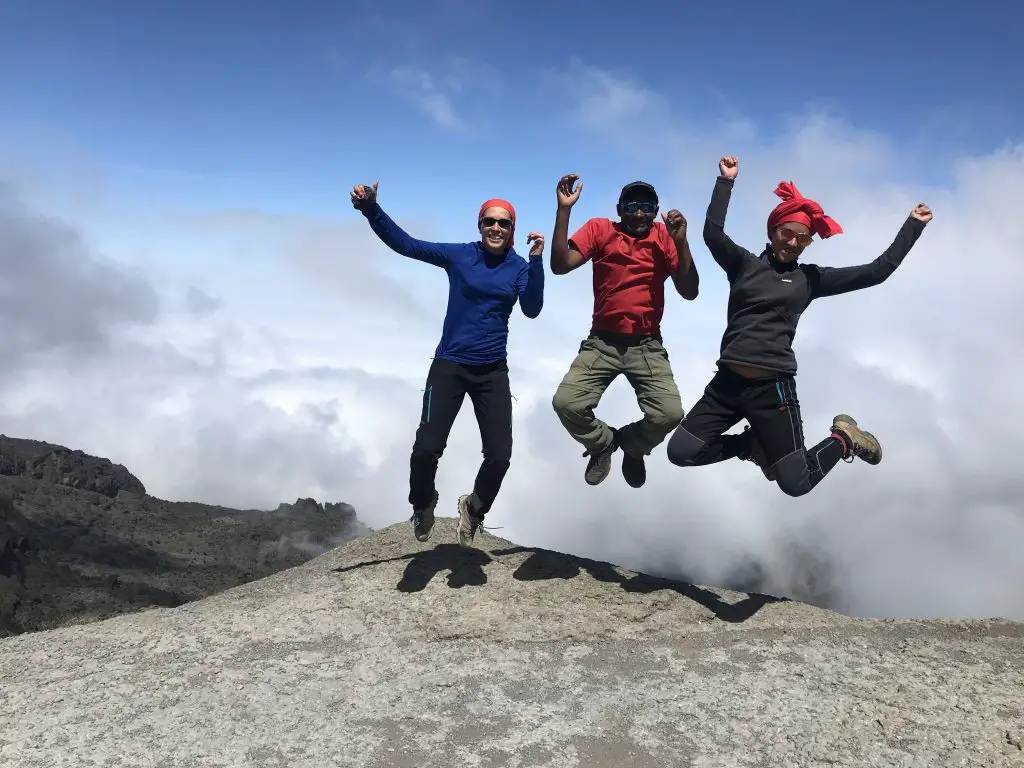
From here, you will continue walking to the Karanga camp, alternating small climbs and descents between the rocks. You will still find some rare flowers at this altitude.
We completed this fourth 6 km stage in 4 hours.
People who have chosen to trek on the Machame route in 6 days combine days 4 and 5 in a single day.
Once you arrive at the camp and have regained some strength, if you feel it you can explore the surroundings and climb a few hundred meters to acclimatise a little to a higher altitude.
This is the last camp where a water source can be found.
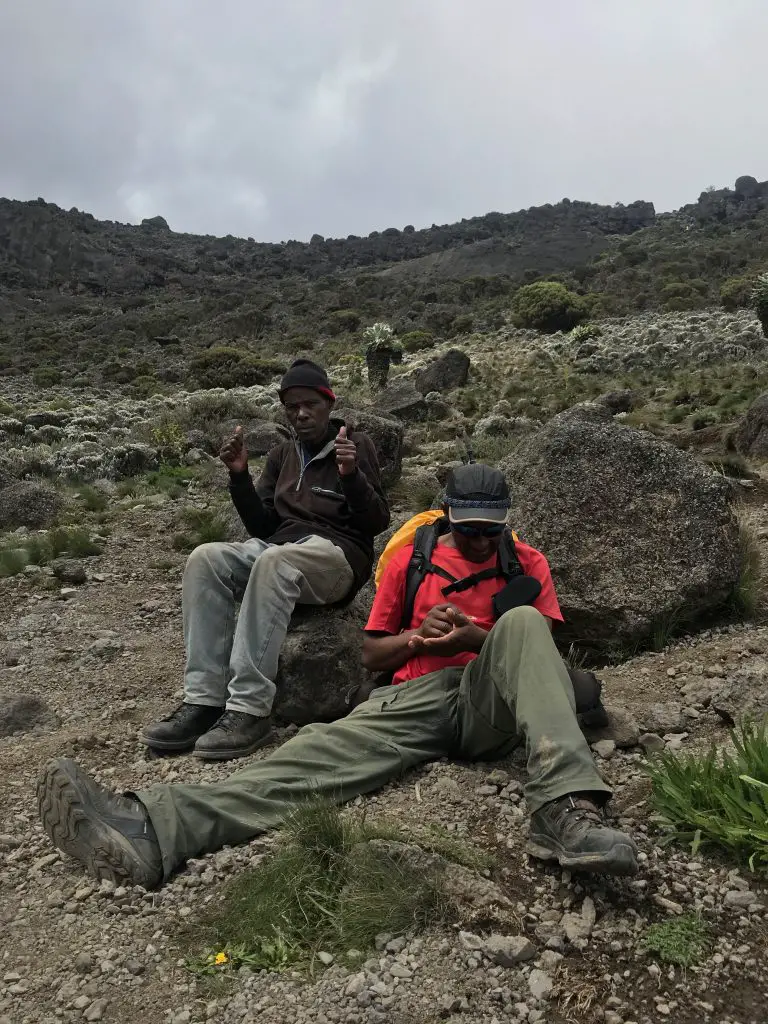
For information, throughout the trek, the carriers will fill jumps with water from the springs of Kilimanjaro. They boil the water so that we can drink throughout our expedition. Beyond this altitude, there is no longer a water source and therefore the porters will be forced to make round trips between this camp and the next camp.
Day 5 – Karanga Camp ( 3995m) to Barafu Camp (4673m)
This is the last day before the great final ascent. It is therefore necessary to keep as much strength as possible for the next day.
This 4km stage can be completed in 4 hours.
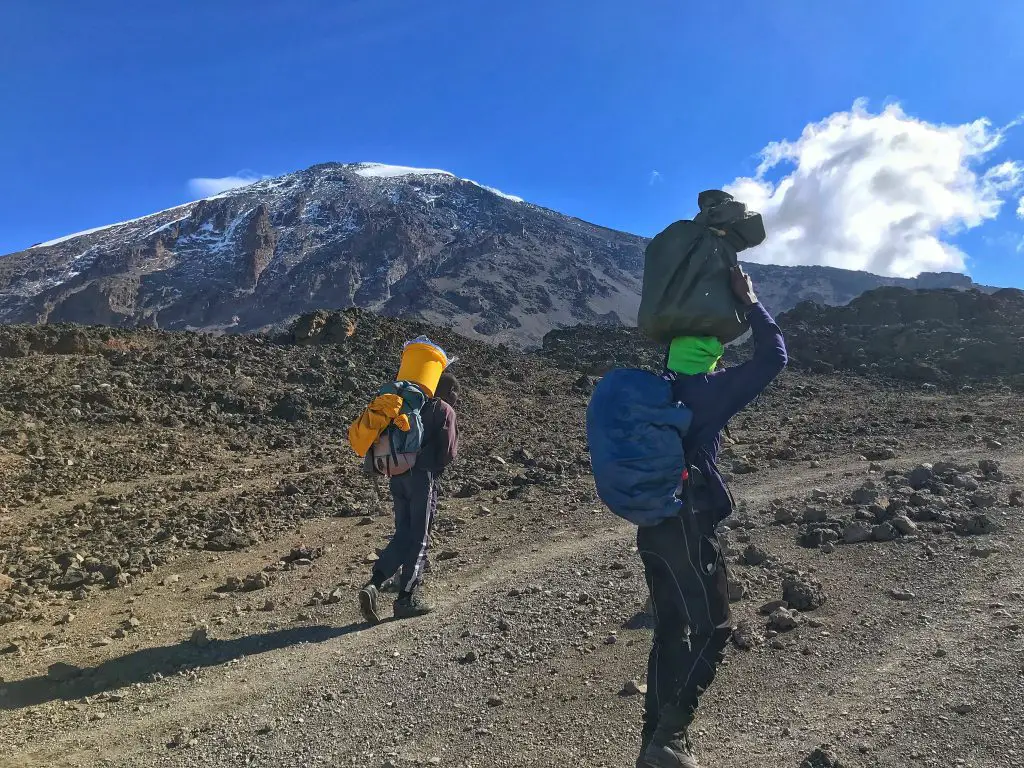
At this altitude the landscape is lunar and the drop in temperatures is clearly felt.
From that point on, I started wearing the hat during the day. Indeed, although the sun is present, the bottom of the fresh air is felt and can make us catch cold.
This stage is not very long, it allows us to rest when we reach the camp in the early afternoon.
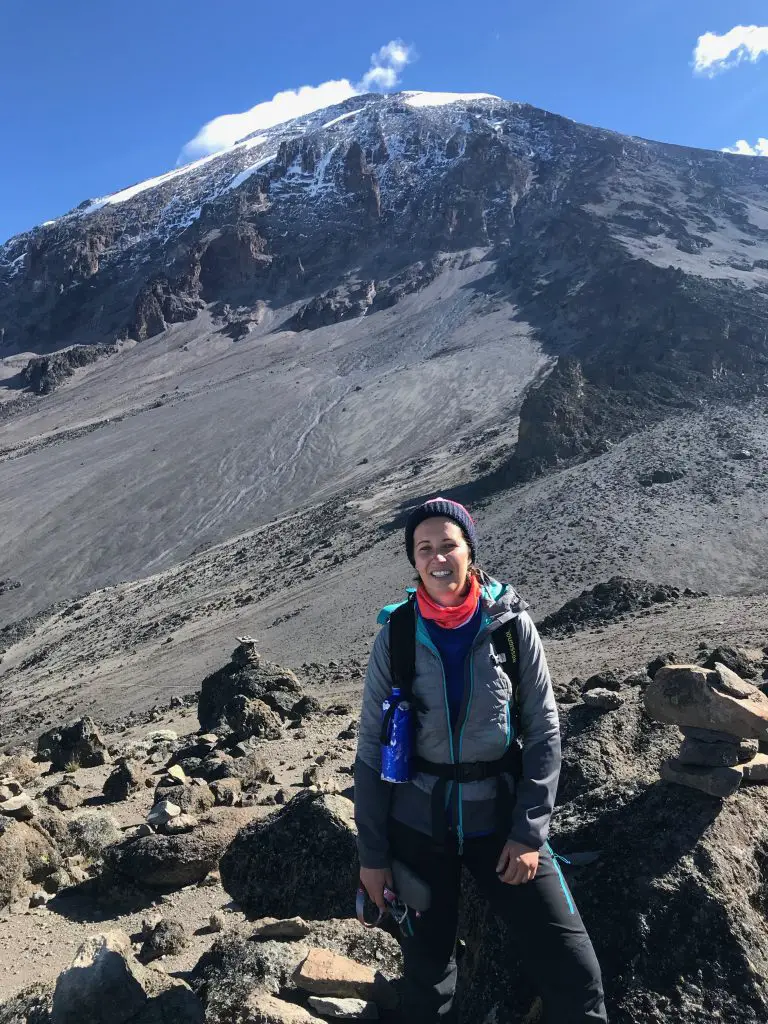
Believe me, this is very necessary when you know that the departure for the final ascent will be at midnight.
At this altitude, I started having a headache. The slightest effort seemed to require a lot of energy. I’ve never experienced anything like this before.
When I had to take one step in front of the other, I was out of breath as if I had just run 15km.
So we rest all afternoon and prepare our things for the next day. The meal is served around 5pm so that we can go to bed around 7pm with an alarm clock set for 11pm.
A little anecdote, the Barafu camp is on a slope and the toilets are at the bottom. My tent was about 70 metres above the toilet. The effort to get to the toilet was so important to us that when we went to the toilet we sat in front of the toilet and waited until we wanted to go again because going back and forth to our tent was far too tiring.
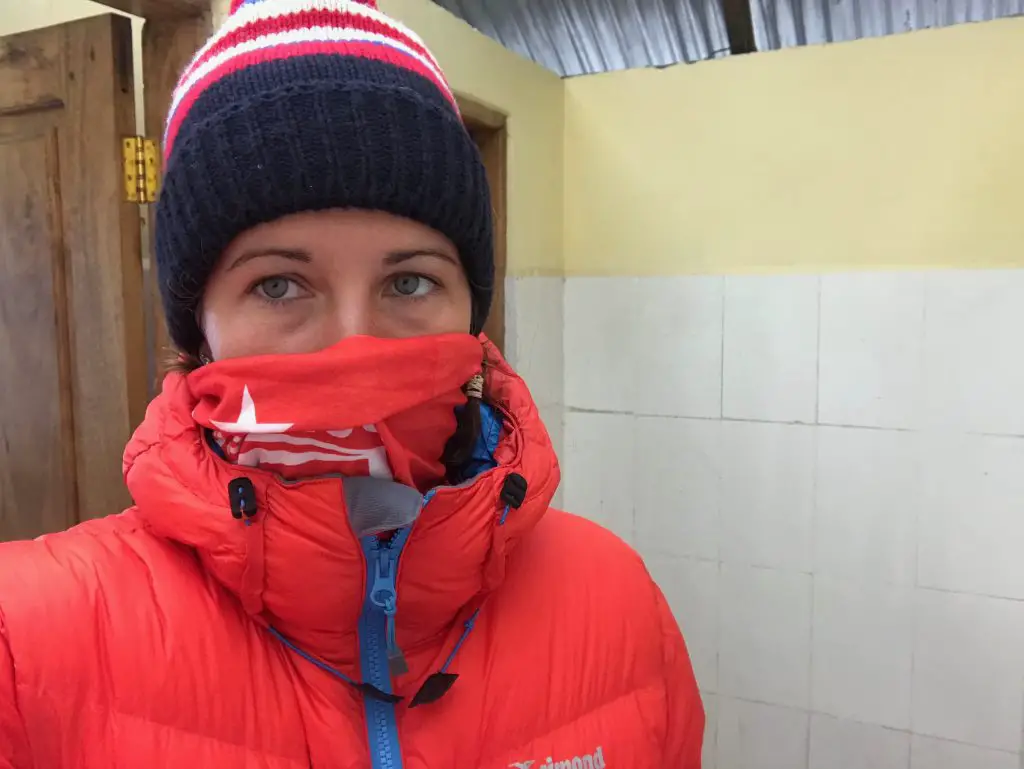
Day 6 – Barafu Camp (4,673m) to Uhuru Peak (5,895m) then descent to Mweka Camp (3,100m)
The alarm clock rings at 11pm for a departure at midnight.
I will lie to you if I tell you that I slept like a baby the day before the final ascension. The excitement is so strong that it is almost impossible to sleep for these few hours.
We wake up absolutely frozen. Be aware that nights can be very cold. In particular, I advise you, every night before going to bed, to put a canteen filled with boiling water in your down to use it as a hot water bottle.
When we wake up, the carriers bring us a good tea and cookies to warm us up and give us strength for the ascent that awaits us.
We are about to walk 5 km with more than 1200m of altitude difference to reach the Uhuru peak which is at 5,895 m altitude.
We start the march with the flashlights. It is cold but the coolest period will arrive around 3am-4am.
Let’s go for a 7-hour walk. The path is very steep, we walk slowly and take small steps because the altitude makes it difficult to walk.
Everyone reacts differently. We meet people who turn around because of mountain sickness.
For my part, I feel like I’m « stoned », « drunk » during the ascent. I pitch a little when I take one step in front of the other.
The ascent is steep and at times it looks like climbing. We take breaks every two hours to rest and drink.
Be aware that a short break of 5 minutes is very good for you and allows you to regain a lot of strength. However, when we stop it is extremely cold, it is therefore impossible to stop for a long time.
We arrived at Stella Point (5,700 m) around 6 a.m. for sunrise. Once there, it is about 1 hour’s walk to Uhuru Peak (5,895 m). The excitement is there, we were really excited to be so close to the goal despite the fatigue that was being felt.
It is at 7 a.m. that we reach the roof of Africa. Our hats and blankets are freezing but we are happy to have succeeded in this extraordinary adventure with the whole team.
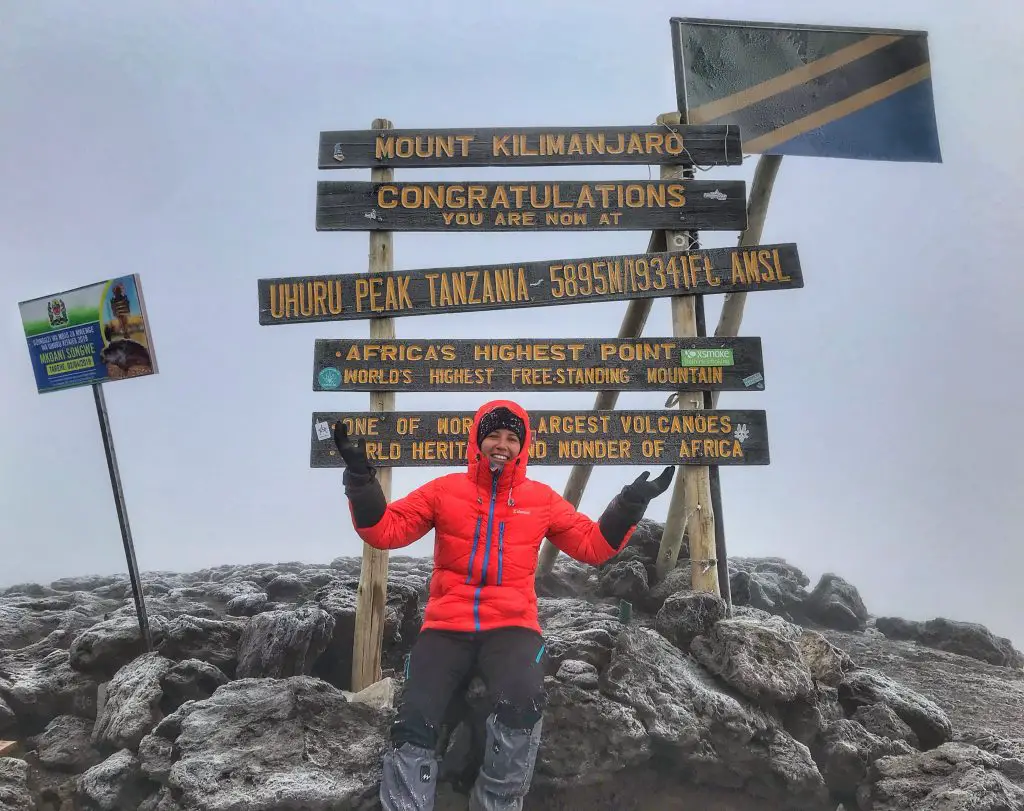
The sun rises and we can enjoy the view and the last snow of Kilimanjaro which will probably have disappeared in 10 to 20 years.
Unfortunately, it is not necessary to stay too long at this altitude because it is not good for the body. We then quietly descend to the camp where our porters and cooks await us with a good breakfast.
The descent takes 3 hours, the exhaustion is felt.
After a good lunch and a short nap (too short) we start the descent to reach our next camp.
Mweka Camp is 10 km from Barafu Camp, so we arrive at the camp after a 3-hour walk.
On the way down we are exhausted but happy with our day.
We spend our last evening with the team and then quickly go to bed.
I got sick, sore throat, cold, I was looking forward to a good shower and a real bed the next day.
Day 7 – Mweka Camp (3,100m) to Mweka Gate (1,640m)
The sun is rising, we are tired and eager to return.
After breakfast and the distribution of tips to porters and guides, we start our last day of walking. 10 km walk to reach the Mweka Gate. The descent is steep through the rainforest, the path we take is reserved for the descent.
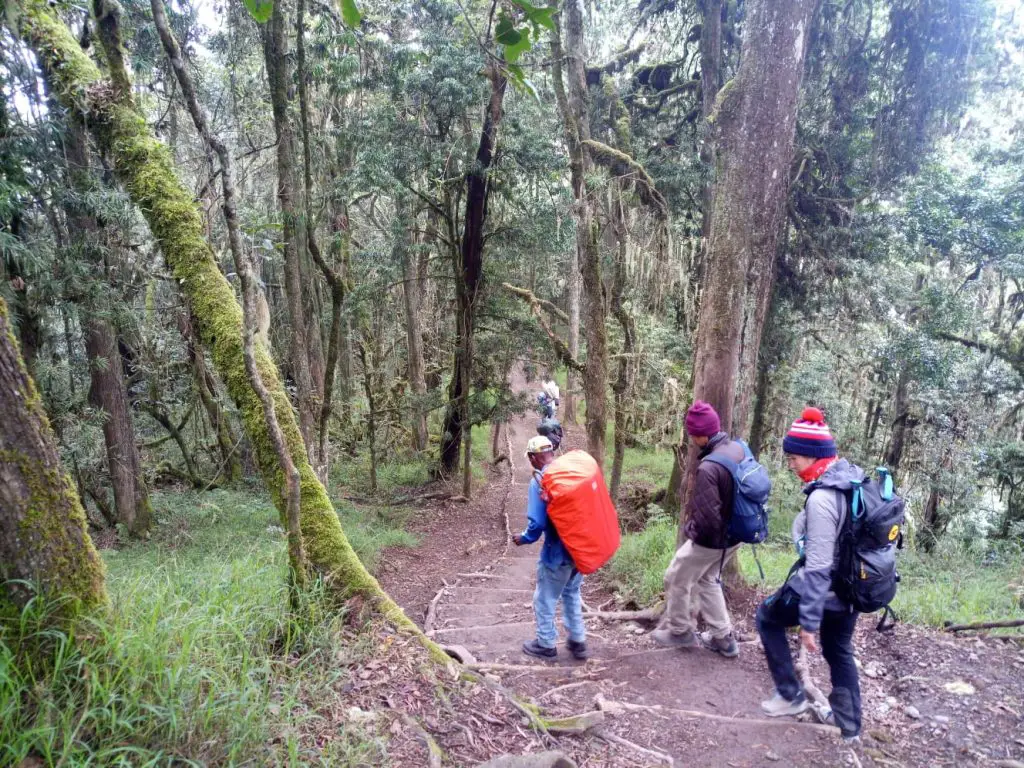
However, we meet some carriers who are going up. We are told that some porters use this route when there is a lack of food or equipment for trekking. Carriers must make the round trip within the day. I will never stop being impressed by these young people.
Finally arrived at the Gate after 3 hours of walking, we receive our Kilimanjaro certificate of achievement!
We did it! 🙂
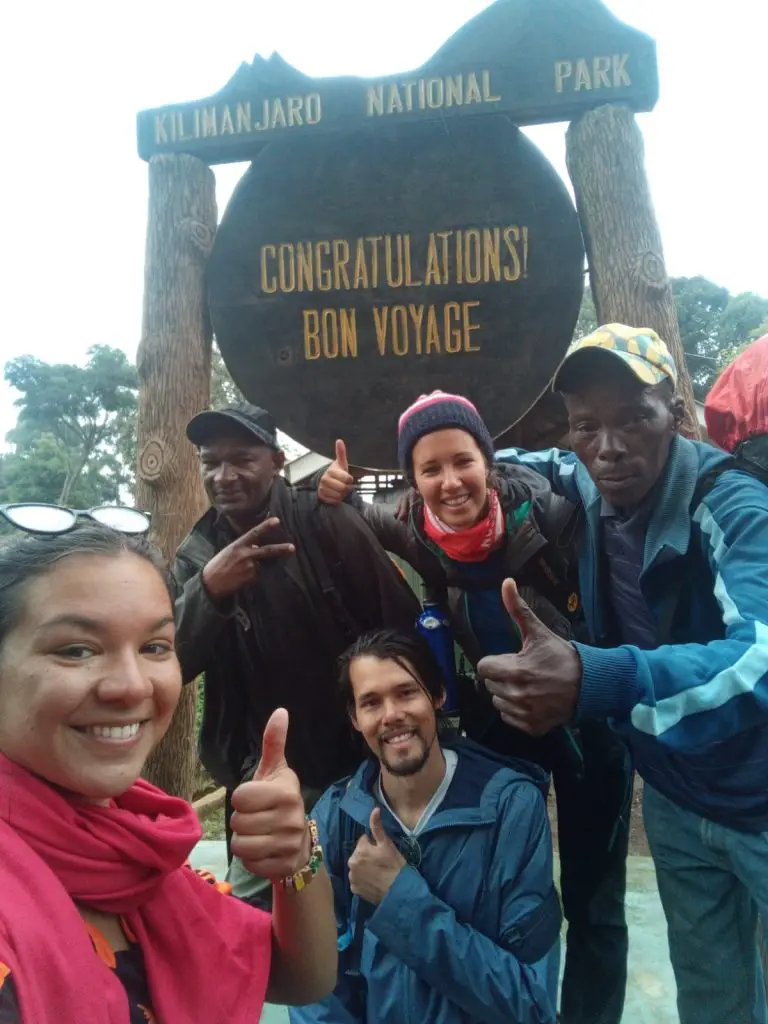
It hasn’t been easy every day but we’ve made it, and you can do it too with determination and motivation!
It is an extraordinary experience to have at least once in your life, in my opinion. I am delighted to have chosen the Machame route on which the landscapes are different and magnificent day after day.
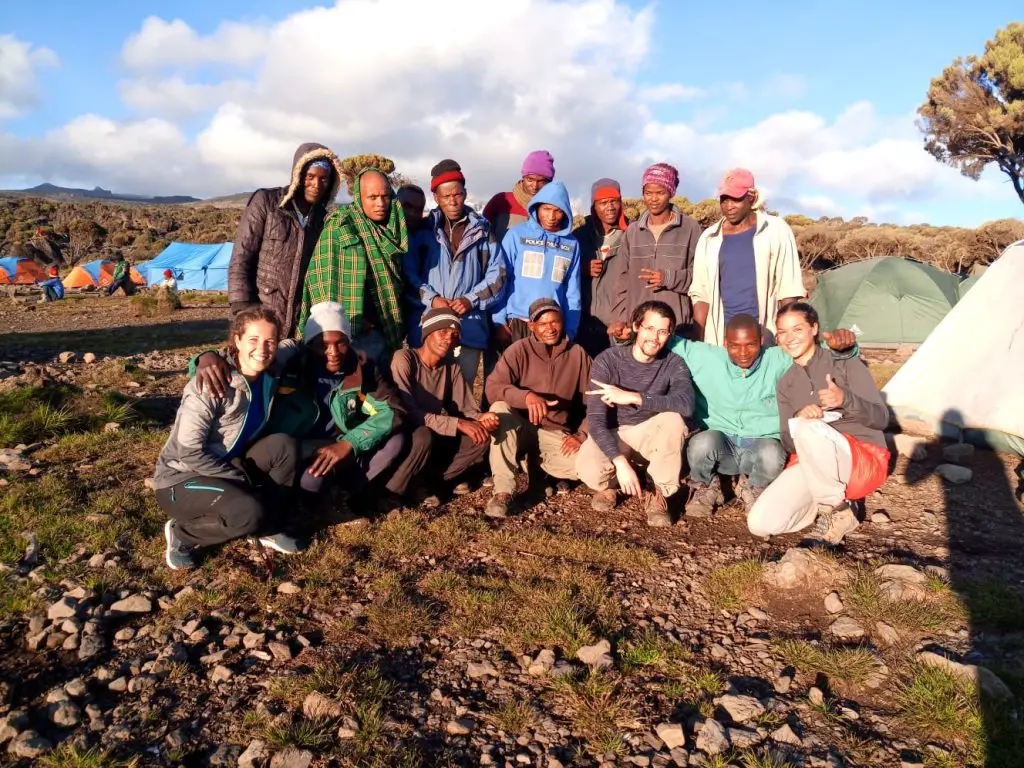
If you liked this article, I recommend one of the following articles on the same topic:

